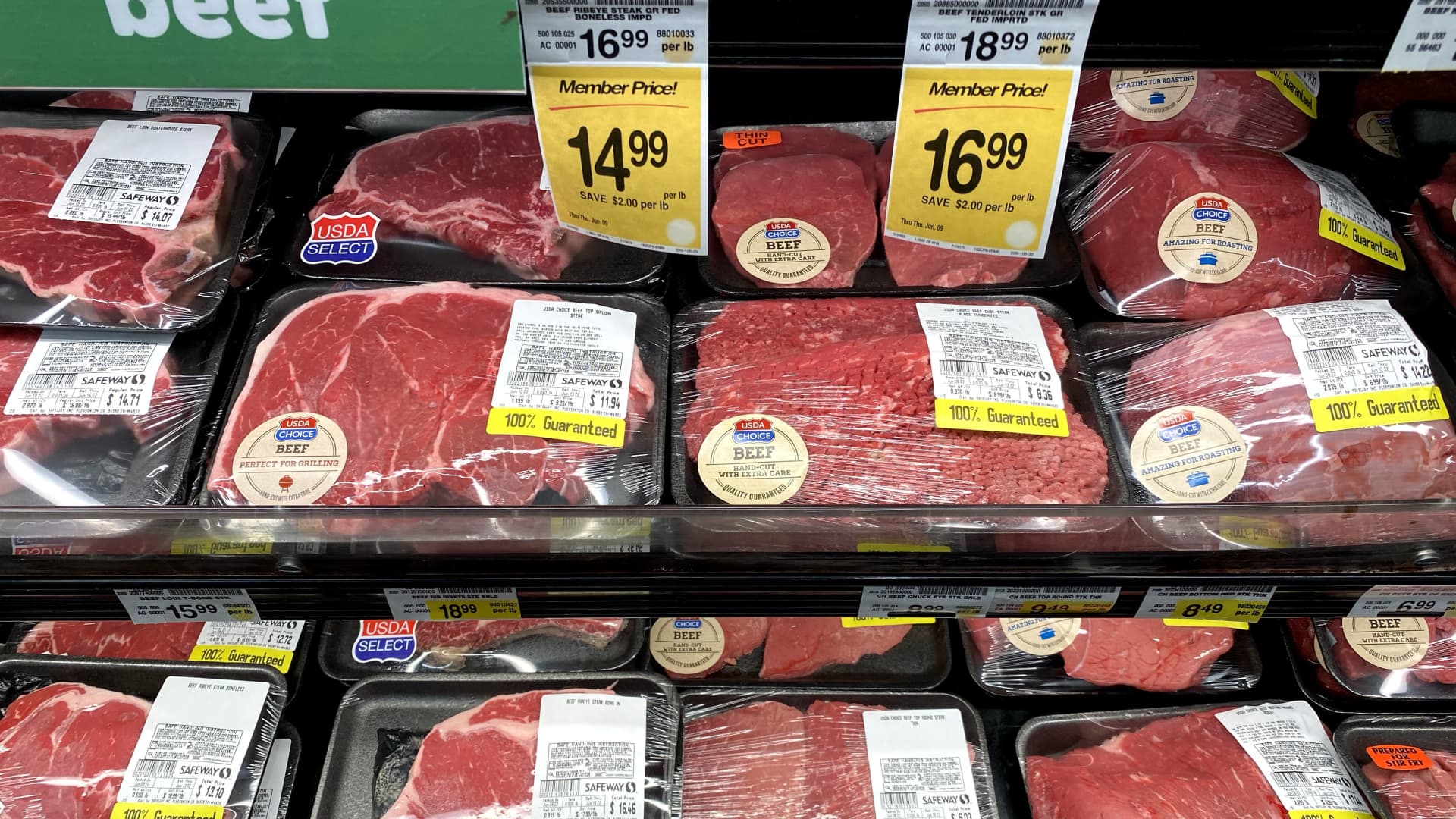
The case that a recession is looming over the U.S. got stronger Friday, as blistering inflation and historic lows in consumer sentiment painted an increasingly dark economic picture.
As if the consumer price index increase of 8.6% wasn’t bad enough news, that release was followed later in the morning by the University of Michigan Index of Consumer Sentiment.
That widely followed gauge of optimism registered a paltry 50.2, the lowest in survey data going back to 1978. That’s lower than the depths of the Covid outbreak, lower than the financial crisis, lower even than the last inflation peak back in 1981.
Taken together, the data add up to an outlook that is not good for those hoping the U.S. could skirt its first recession since the brief pandemic downturn of 2020.
“I wouldn’t be surprised if it started in the third quarter of this year,” said Peter Boockvar, chief investment officer at Bleakley Advisory Group. “You can say that we’re in the midst of it right now, in the beginning phase. Only in retrospect will we know for sure, but it should not surprise us at this point.”
How long it will take to get to that official recession is a matter of debate that only time will resolve. But the recent data suggest the moment of reckoning may be closer than many economists are willing to concede.
While consumer spending remains resilient, it’s come at the expense of a savings rate that has dipped to its lowest level since September 2008, the month Lehman Brothers crashed to set off the worst of the financial crisis.
Household net worth in the first quarter fell slightly, the first decline in two years, according to Federal Reserve data released earlier this week. That came as household debt rose 8.3%, the biggest annualized gain since 2006.
The Atlanta Fed is tracking second-quarter GDP growth of just 0.9%. Coming after Q1’s decline of 1.5%, a further deterioration in the current period would trigger a common rule-of-thumb for a recession — two consecutive quarters of contraction.
A strong labor market has been the principal firewall against a downturn, but even that has shown some chinks lately: Last week’s May nonfarm payrolls tally, though better than expected, represented the smallest gain since April 2021. And Thursday’s weekly jobless claims report for last week showed the highest level since mid-January.
Teetering on the edge
Still, the prevailing sentiment on Wall Street is that the economy still can manage to avoid an actual recession.
“If you look at these numbers, there’s pretty much nothing that the Fed would say, `This is good news,'” said Michael Kushma, chief investment officer for global fixed income at Morgan Stanley. “I’m still optimistic that with the downshift in the economy, we might flirt with recession, but we’re not likely to get there yet.”
Even still, Kushma acknowledges that the “investing landscape is negative on almost every front.”
Indeed, Wall Street is closing the week amid a torrent of selling that encompasses stocks and bonds, indicating both a likely path of higher interest rates ahead and a reckoning that the relatively rosy outlook for corporate earnings is unlikely to hold up.
Target has been serving as a canary in Wall Street’s coal mine, offering up two recent readjustments on its outlook to reflect a weakening shopper, burgeoning inventories and thus declining pricing power. Should those trends escalate, the pillar of consumer spending that holds up nearly 70% of the $24 trillion U.S. economy is unlikely to hold.
“More and more corporate announcements and earnings releases (or warnings) are reflecting a consumer that is now in a terrible mood given the decline in net disposable income, and consequently, these consumers are dramatically slowing spending on the backside of it,” wrote Rick Rieder, BlackRock’s CIO of global fixed income.
Rieder worries that the biggest risk to consumer spending and job creation is that the current spate of high inflation will push central banks such as the Fed to tighten policy too much “and essentially fall into a damaging policy mistake.”
‘We’re in technical recession’
However, there’s a feeling elsewhere that the damage has already been done.
“We’re in technical recession but just don’t realize it,” Bank of America chief investment strategist Michael Hartnett wrote before the inflation and sentiment reports hit. Noting the Atlanta Fed GDP estimate, he said the U.S. is just “a couple of bad data points away from ‘recession.'”
Fed officials have expressed confidence they can keep raising rates without tipping over the increasingly fragile economy.
Following the inflation report, markets priced in at least three consecutive half-percentage-point rate hikes — in June, July and September — and a pretty good chance of one more in November. However, central bankers likely won’t commit that far out, hoping that the work it does over the summer will be enough to reduce the pace of price increases and the necessity for more draconian policy tightening.
“The consumer at the margin is not going to be able or willing to continue to pay those prices. Therefore, we think it introduces greater stagflationary risk,” said Phil Orlando, chief equity market strategist for Federated Hermes, referring to the term for stagnant growth coupled with high inflation. “From a timing standpoint, we do not have a recession call on the table for this year. Our models are suggesting that 2024 is the more likely recession timetable.”
Still, Orlando said investing in the current environment is going to be tough. Federated expects more damage to be done before a possible turnaround in the late summer or early fall.




